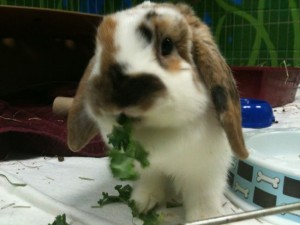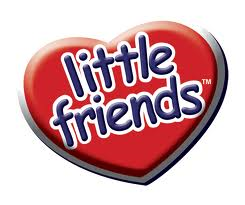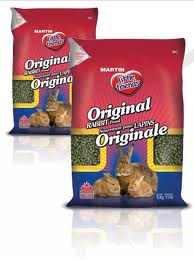 Adult rabbits (over approximately 7 – 8 months) who are no longer growing require more fibre and less protein and calcium than young, growing rabbits. Ideally, pellets should be high in fibre (a minimum 18%), low in protein (maximum content of 14% – 15%) and low in calcium (maximum 1%).
Adult rabbits (over approximately 7 – 8 months) who are no longer growing require more fibre and less protein and calcium than young, growing rabbits. Ideally, pellets should be high in fibre (a minimum 18%), low in protein (maximum content of 14% – 15%) and low in calcium (maximum 1%).
Timothy based pellets are higher in fibre and lower in calcium than Afalfa pellets.
Timothy pellets may be beneficial for:
Rabbits who have stones or sludge (because they have less calcium than alfalfa based pellets).Rabbits who are overweight or those who suffer from intermittent soft stool (because they are lower in protein and higher in fibre than alfalfa based pellets).
Timothy pellets may not be a good choice for long haired rabbits (who need extra protein for hair growth) or thin rabbits.
OREO recommends MARTIN Little Friends Rabbit Pellets

Read More:
Alfalfa- and Timothy-Based Pellets: What’s the “Skinny?” By Susan Smith
Changing Your Rabbit’s Diet
Some rabbits over-consume pellets, which can lead to obesity and other health problems. If your rabbit has had a diet that consisted solely of pellets, introduce grass hay and slowly add a variety of greens, while gradually reducing pellet intake. Remember to make dietary changes slowly and to watch your rabbit closely. As you limit your rabbit’s pellet intake, make sure he is eating an increased amount of hay and greens. Do not restrict pellets too much if there is no other food source.
A daily guideline for pellet consumption if your rabbit is eating a lot of hay and fresh foods:
- 1/8 cup for 2-4 lbs body weight per day
- 1/4 cup for 5-7 lbs body weight per day
- 1/2 cup for 8-10 lbs body weight per day
- 3/4 cup for 11-15 lbs body weight per day
Other Points to Keep in Mind
Thin, ill or elderly rabbits can be given more pellets to help sustain their proper weight. Please see your veterinarian if you are not sure of the proper weight for your rabbit.
Plain pellets are a healthier choice than pellets that include seeds, nuts, corn or dried fruit, which are unnecessarily high in sugar and fat.
Old/expired pellets may lose their nutritional value over time, so do not buy too many pellets at one time. Store pellets in a cool, dry place to keep them fresh. It is not recommended that you freeze your rabbit’s pellets to prolong shelf life because the introduction of moisture during the thawing process and fluctuating temperatures may be conducive to mold growth and subsequent formation of mycotoxins.
Read the following articles on the risk of mycotoxins in rabbit feed:
Mold and Mycotoxins in Rabbit Feed by: Cristina Forbes, Ph.D
Molds, Mycotoxins and Feeds: A Brief Summary by: Dr Ron Rompala
Pyloric Stenosis in Rabbits: National Center for Biotechnology Information
Some rabbits may never find hay and greens that appealing and will remain pellet junkies. Try not to force feed, stress or upset your rabbit when changing his diet. Like people, rabbits don’t always like to eat what is best for them!
Another good reason to limit pellets and feed your rabbit lots of hay: Pellets are softer and easier to chew than hay, while hay helps to sustain healthy teeth by reducing the risk of molar spurs.
Remember that pellets do not need to be the main food source of a mature rabbit’s diet! It’s a misconception that a rabbit should be fed pellets exclusively. In fact, some rabbits thrive on a pellet-less diet of hay and a variety of fresh vegetables.



